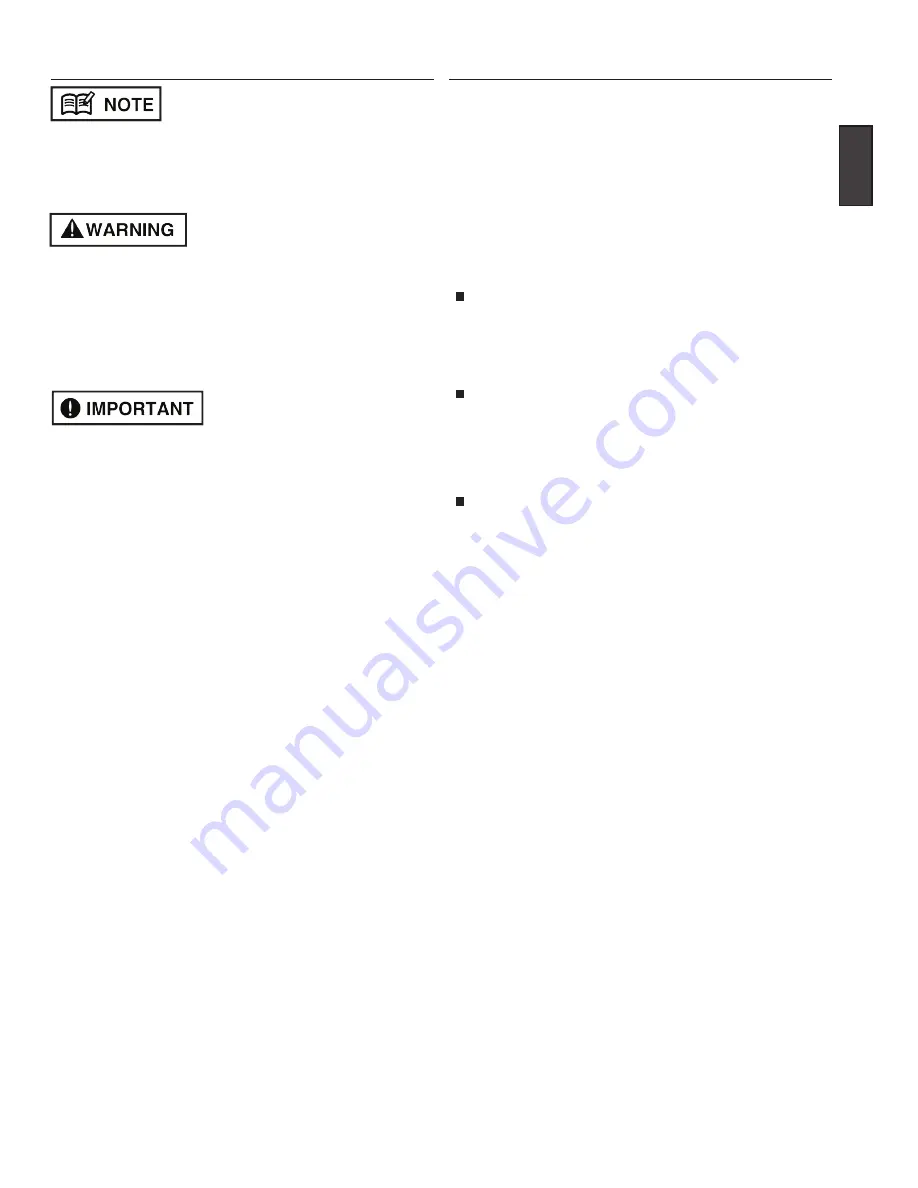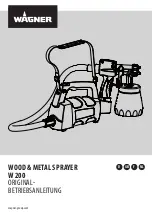
U
S
6. Pre-operation
Hose clamps are not completely tight.
Please tighten hose clamps prior to using.
Hose clamps are left loose to extend life of gaskets and
fittings.
Oil cap gasket before using and lubricate weekly so the
gasket will seal properly and prevent chemical leaks.
Oil check valve and keep breather hole clear of
debris. Your failure to oil may cause the tank to collapse
and crack due to vacuum created by pump lubricate with
“3 and 1” oil.
Before using, oil cap gasket, felt pump washer, and check
valve, and keep breather hole clear of debris. Your failure to
oil, clean check valve, and maintain breather hole open to
allow air into the tank, can cause the tank to collapse and
crack, due to vacuum created by pump.
1. Before you remove cap, be sure there is no pressure in the
tank. in order to release pressure, invert unit upside down
and squeeze spray pistol (aim away from you). Pressure will
escape; when hissing stops, all pressure has been
released. Remove pump assembly by turning
counter-clockwise. The pump handle has two locking
positions, one turning clockwise and one counter-clockwise.
2. Remove cap.
3. A unit that has been used with herbicides should never be
used to spray insecticides, unless the sprayer has been
properly cleaned and all other chemicals neutralized.
Failure to do this could cause you to kill plants that have
been sprayed. Consult with the manufacturer of the
chemicals in use to obtain proper instructions.
4. Always oil the gasket on the cap of the unit, as well as the
check valve. This will extend the life of the seal and is
important for obtaining a proper seal with no leaks.
5. Mix solution in a separate container, following the
manufacturers’ directions.
6. Pour pre-mixed solution through strainer into tank. Reinstall
cap tightly.
7. Place sprayer on back and pressurize tank by pumping
approximately 5 to 15 times.
8. You will need to pump occasionally to maintain the desired
spraying pressure.
9. For best results, the sprayer should be pumped every five
seconds on a continuous basis. This will maintain your spra
ying pressure. If you do not pump, you will not have
pressure to spray.
• Always release pressure in the pump prior to filling,
cleaning, or servicing the sprayer.
• Before opening a container of pesticide or other spray mate
rial, carefully read, understand, and follow all instructions on
the label.
• Do not use flammable materials in the sprayer: they can
ignite and/or explode, causing serious injury.
• Never use caustic or corrosive materials in the sprayer,
which could result in damage to the unit.
• To adjust nozzle, tighten cap (turn clockwise) for fine atomi
zed spray, or loosen (turn counter-clockwise) for coarser
spray or solid stream.
• For best results, the sprayer should be pumped every 5
seconds on a continuous basis. This will maintain your
spraying pressure. If you do not pump, you will not have
pressure to spray.
Herbicide : Yes
Insecticides/Pesticides : Yes
Fertilizers : Yes
Chlorine (5%) : Yes, If cleaned (*)
Diesel : Yes
Wettable Powder : No
Stains & Sealers : Yes
Oil Based : Yes
Solvent-Based : Yes
Viscous : No
(*) Permanent damage will occur if sprayer is not cleaned
properly after each use with Chlorine
HOW TO ADJUST THE NOZZLE
HOW TO PREPARE YOUR UNIT FOR USE
RECOMMENDED APPLICATIONS FOR
“LAWN AND GARDEN” OR “AGRICULTURE” USAGE.
7. Operation
BP4P
US-7



























